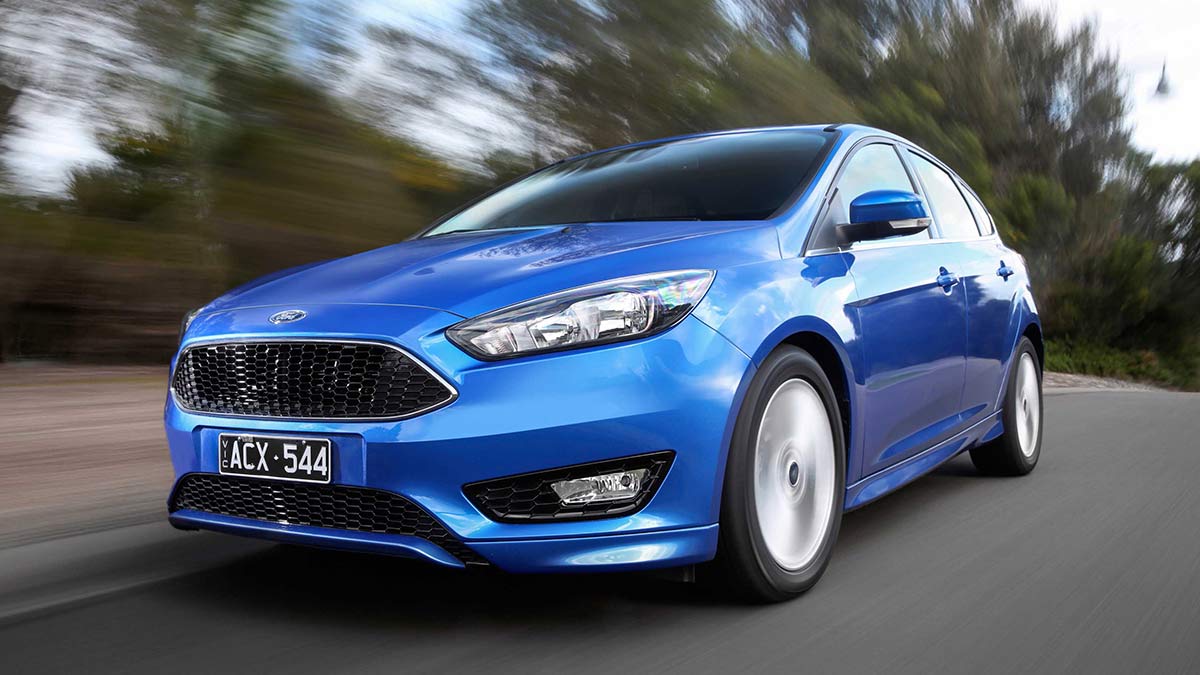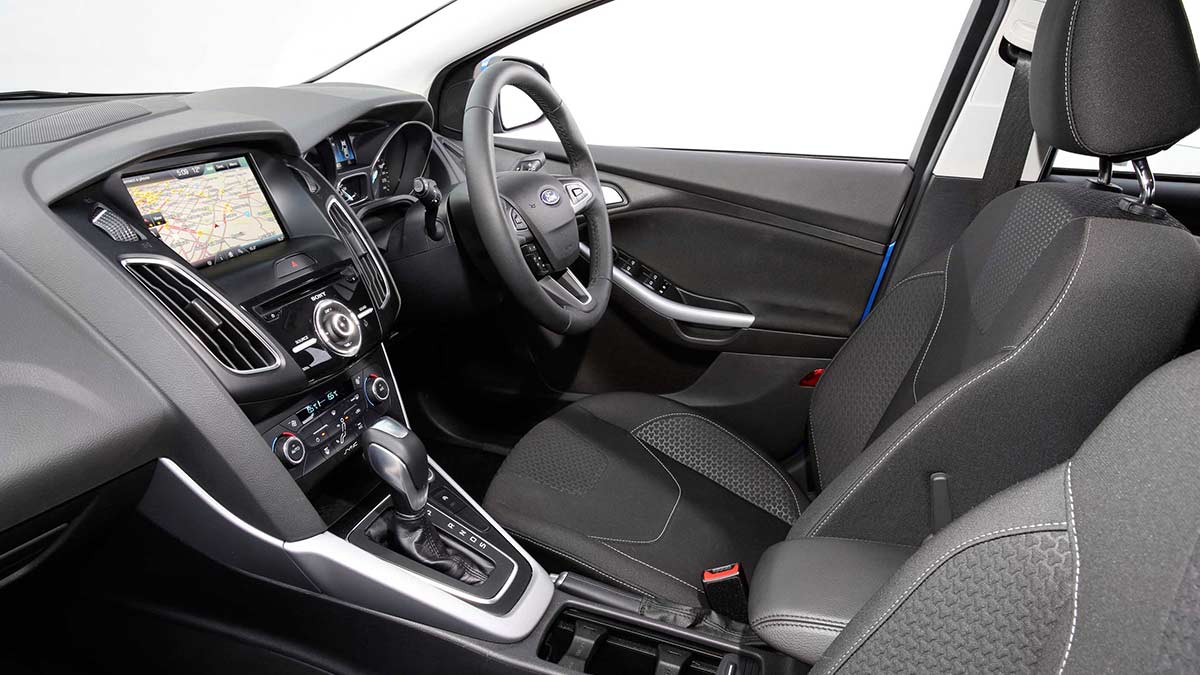Ford Focus LZ 2015-2018 used car review

Greg Hill reviews a second hand Ford Focus LZ from 2015-2018.
The Ford Focus reinvented itself in late 2015 with the introduction of the LZ model. The previous LW series is a used car to avoid, due to disastrous ‘Powershift’ dual-clutch automatic transmission issues that Ford struggled with, but failed to properly address.
The LZ Focus wasn’t an all-new model, but it benefitted from a substantial makeover, including a successful engine and automatic transmission transplant, along with some suspension tweaks. The LZ range can be split into two categories – the mainstream models including Trend, Sport and Titanium, or the more performance-targeted hot-hatch variants, such as the ST and the all-wheel-drive RS. In keeping with their sporting intent, both the ST and RS are manual only. Offerings on the used market are evenly split between the grades. (More: Ford LW series Focus used car review)
In the mainstream models, Ford fitted a stronger-performing, more fuel-efficient 1.5-litre EcoBoost turbo-petrol engine and teamed it with smooth-shifting, conventional torque converter style six-speed automatic transmission. A six-speed manual can be found in the Trend grade. The Trend and top-spec Titanium were offered in both sedan and hatchback form, but the Sport was hatchback only.
The Focus is a practical small car that has a style and range of features that appealed to many buyers. Each version was relatively well equipped for its position in the range. Front-seat comfort is good but there’s not an abundance of rear-seat space. For the driver, the LZ presentation features Ford’s Sync2 connectivity system with voice control and an eight-inch touchscreen.
The LZ has a 2014 date-stamped five-star ANCAP safety rating, with the Titanium getting extra advanced safety features.
On the road, the mainstream LZ Focus is one of the most capable and enjoyable cars in its class. The 1.5-litre direct-injection turbocharged EcoBoost petrol engine’s healthy 132kW of power and 240Nm of torque is ably supported by the smooth-changing six-speed automatic and does everything you would expect from this type of car, with consummate ease.
A broad spread of torque, with the peak output reached at a low 1600rpm and maintained through to 5000rpm, gives the Focus excellent performance flexibility. Not only is the LZ Focus one of the strongest performers in the class, it also returns respectable fuel economy, but it will vary depending on how the performance is used. Most owners report average consumption of between 7.5 to 9.5L/100km. The LZ will run on regular 91 octane petrol but premium-grade 95 or 98 RON is recommended by Ford for the best results.
Good chassis and suspension dynamics has always been one of Focus’s strengths. To keep the ride and handling among the best in class, Ford engineers fine-tuned the suspension, improved the electric power-assisted steering and upgraded the stability control system. The well-controlled ride is firm but comfortable, while for an everyday car its sharp handling has a user-friendly feel with a touch of sporting appeal. Depending on the model grade, the LZ came standard with 16, 17, 18 or even 19-inch alloy wheels. While the bigger wheels look better, they tend to give the car a harder ride.
The sportier ST employs a more powerful 2.0-litre EcoBoost engine that produces a healthy 184kW of power and 360Nm of torque. A two-time Australia’s Best Car’s winner in the Sports Under $50,000 category (2015 and 2016), it’s an affordable hot-hatch that has enough acceleration and handling prowess to put a smile on the enthusiast’s face. Driving through the front wheels, however, some torque-steer is evident under hard acceleration.
In terms of outright sporting ability, the ST is overshadowed by the more potent RS with its 2.3-litre EcoBoost punching out 257kW and 440Nm, while the AWD system put the grunt to the road in a more efficient manner. This extra ability, however, does come at a significantly higher price.
Regular oil changes are important with a modern turbo engine, so make sure the car has a complete and up-to-date service history. Look for signs of serious accident damage and poor-quality repairs. The sportier versions tend to be driven harder, particularly the RS model which features a drift-mode. Look for indications that they have been thrashed, such as uneven tyre wear or minor scrapes and dents underneath. Versions that have been used for trackwork should be approached with the upmost caution.
Check the cooling system for leaks. We have heard reports of the heater cores leaking. Like many cars these days, when the brake pads are replaced, don’t be surprised if new disc rotors are also needed.
Normal road noise in the Focus tends to be a touch higher than some of its peers, but not excessive. When road testing, listen for any harsh or abnormal noises. While the transmission transplant has been a success, still check the gear changes are smooth and there’s no slipping.
In manual versions, check for clutch slippage. The clutch is a normal wearing part and should always be checked as a matter of course. Ford, however, issued a recall due to excessive clutch slip with potential for the pressure plate to break and cause extensive damage. This was on 2015 and 2016 models. The faulty units should have been replaced now but check with Ford or a dealer to make sure.
The competition: Mazda3, Toyota Corolla or Hyundai i30.

